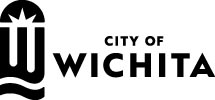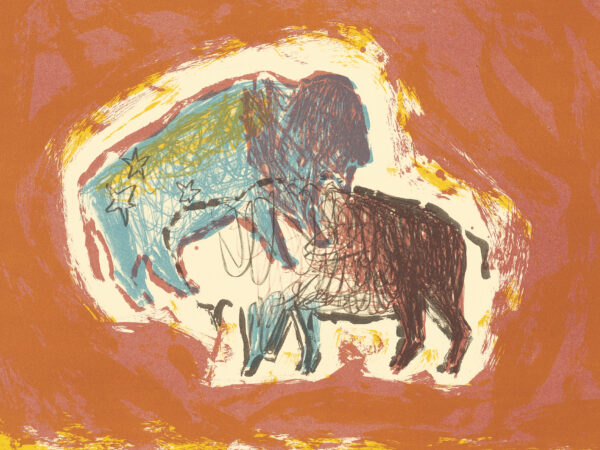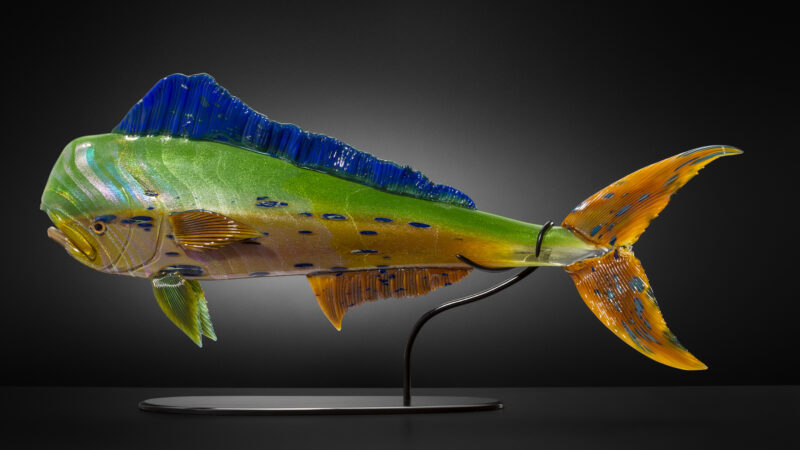
Clearly Indigenous: Native Visions Reimagined in Glass
June 11 - September 10, 2023
Louise and S. O. Beren Gallery
John W. and Mildred L. Graves Gallery
About This Exhibition
The pliable, translucent material of glass is ideal for Native artists looking to re-interpret traditional stories and express contemporary issues affecting tribal societies. The artworks on view include totems, animal sculptures, ceremonial regalia, baskets, and masks, all of which honor past artistic traditions while exploring contemporary concerns. Vessels and baskets traditionally made of grass or clay, for instance, are now beautifully rendered in glass.
The exhibition includes artists who were the first Native Americans known to blow glass and create glass art, including Larry Ahvakana (Inupiaq), Carl Ponca (Osage), and Tony Jojola (Isleta Pueblo). It also features the second generation of Native glass artists, such as Dan Friday (Lummi), and others who have established careers in other media but have also designed glass.
TOP: Raven Skyriver (Tlingit), Mahi Mahi, 2017. Off hand sculpted glass, 16 x 19 x 31 inches. Collection of the artist. Photo by KP Studios, Courtesy of Raven Skyriver, Stanwood, Washington. © Raven Skyriver
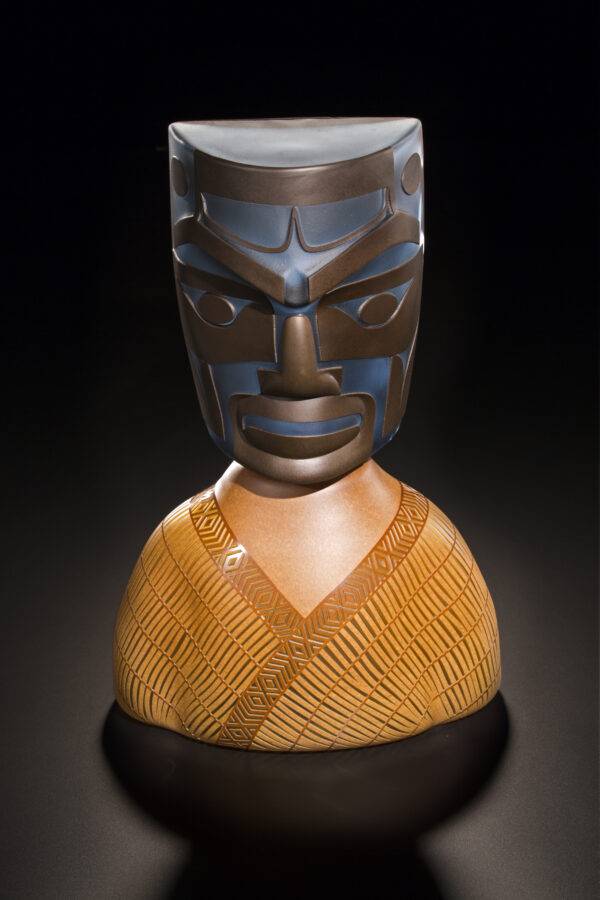
Preston Singletary (Tlingit) and Joe David (Nuu-cha-nulth), Looks to the Sky, 2017. Blown, sand-carved glass, 19 1/4 x 12 x 6 inches. Courtesy Blue Rain Gallery, Santa Fe, New Mexico. © Preston Singletary and Joe David
Interview with Artist Preston Singletary
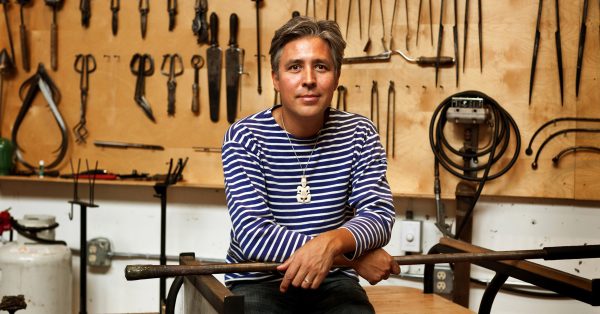
Artist Preston Singletary
WAM Curator Tera Lee Hedrick interviewed artist Preston Singletary about his work and the exhibition.
Wichita loved your and your work when you visited for the opening of Raven and the Box of Dayllight. You were in town in February 2020, right before the Covid-19 pandemic hit. Can you tell is what you’ve been up to since then?
I’ve been working on public art pieces—developing and pitching them. They are kind of coming together. One was La Diab Pish with David Franklin at Climate Pledge Arena (Seattle). Of course, Raven was in Washington, D.C. for a year at the Smithsonian. I am looking forward to the next 10 years, thinking about the next chapter. I’m going to be 60 this year, I’m figuring out what I’d like to do, where to go with my work.
Can you remind our readers of your early history with glass art? How long was it before you combined your interest in glass with your Tlingit culture?
I started blowing glass in 1982. In 1984, I started going to Pilchuck Glass School [a glass art school in Washington State founded by Dale Chihuly in 1971]. During that period, I was learning to handle the material and make objects that I could put into galleries and try to sell. It was 1988 that I started to dabble in Tlingit designs. It wasn’t until 1996 that I made a complete switch to developing the Tlingit designs. Then I started to get notoriety for that—being a Native American glass blower. Things happened really quickly after that. I had to really get an understanding of the design system under my belt, familiarize myself with the history and the mythology.
I’ve read that you were encouraged by Tony Jojola (Isleta Pueblo) and Larry Ahvakana (Inupiaq), two of the first Native glass artists, whose works are included in Clearly Indigenous. Can you tell me about your first exposure to their work? When did you meet them?
I met Tony and Larry the very first session I went to at Pilchuck. It just so happens that they were there. And so we all became friends, pretty quickly. I’m sure that’s where that seed planted in my mind [about incorporating Tlingit forms and designs in his work]. What was the chance of going to Pilchuck and meeting two Native artists that were working in glass? I still think back on those guys, that time—of course, we lost Tony last winter.
Can you speak about your connection with other Native artists? I know you have a special relationship with Artist Joe David (Nuu-Chah-Nulth)—you collaborated with him on two works that are in the exhibition.
We met in the summer of 2000. He was the artist in residence at Pilchuck, I helped him learn about glass. I think it is almost like a traditional mentor-mentee relationship. We are really good friends, but he encouraged me, we met, we worked, and became really close. He kind of adopted me, and validated me in a lot of ways, because he was a respected elder. He did adopt me and share his name with me, that was a significant thing. It is a progression—you get different names at different points in your life, as you change. Joe’s name is known on the Northwest Coast, I carry that name as well. I also worked with Marvin Oliver (Quinault/ Isleta Pubelo).
Clearly Indigenous is a story of mentorship and collaboration—it traces so many connections between generations of artists and communities of artists. You collaborated with other artists on 16 works in the exhibition. You obviously love to collaborate—Why do you keep coming back to it?
Glass blowing is by its nature collaborative. It seemed natural to me to want to share the material with Native artists. I am convinced that glass can bring another dimension to Native art—I am an ambassador of glass to other Indigenous cultures. And collaboration challenges me—aesthetically, technically, that’s always fun. It’s always a challenge to try something new, something that I didn’t think I could accomplish. I usually let the other artist take the lead in the form and the design work. That is my way of showing what the possibilities are. I don’t teach that much, I think I’m leaving behind this vocabulary, this way of working, that people can learn from.
I feel like I learn from other artists how they interpret their own culture. It gives me a lot to think about. Work might be tied up with intellectual property issues—things that shouldn’t be shared outside a particular Native community—I learn how they deal with that issue. It has opened so many doors for me. The Maori collaborations opened up other doors— those in particular. They have jadestone with glass. It is fun to play with those combinations.
Do you see yourself as a mentor to the next generation of glass a rtists, like Dan Friday (Lummi) and Raven Skyriver (Tinglit)?
There’s one intangible thing—you can’t just inject people with enthusiasm. Dan’s a perfect example of someone who has been able to gather all this experience and then channel that into his own work. It is one thing to teach someone how to blow glass, but how are they going to keep going with it? To see how he’s preserved it is really remarkable. Between people like him and Raven Skyriver, the younger generation, I haven’t mentored them directly, but hopefully they’ve picked up small pointers from me and can see a path.
Who else influenced your career?
I want to give credit to Blue Rain Gallery (Santa Fe) for developing glass art in Native art collecting circles. In 20 plus years of working with them, they’ve supported me every step of the way. I could sense this opportunity—like Japanese glass artists, they were creating work that had a very Asian feel to it. I was trying to imagine what the Native American version of that would be. I was convinced that if people could learn how to embrace the material, that sensibility would emerge.
Artists in the Exhibition
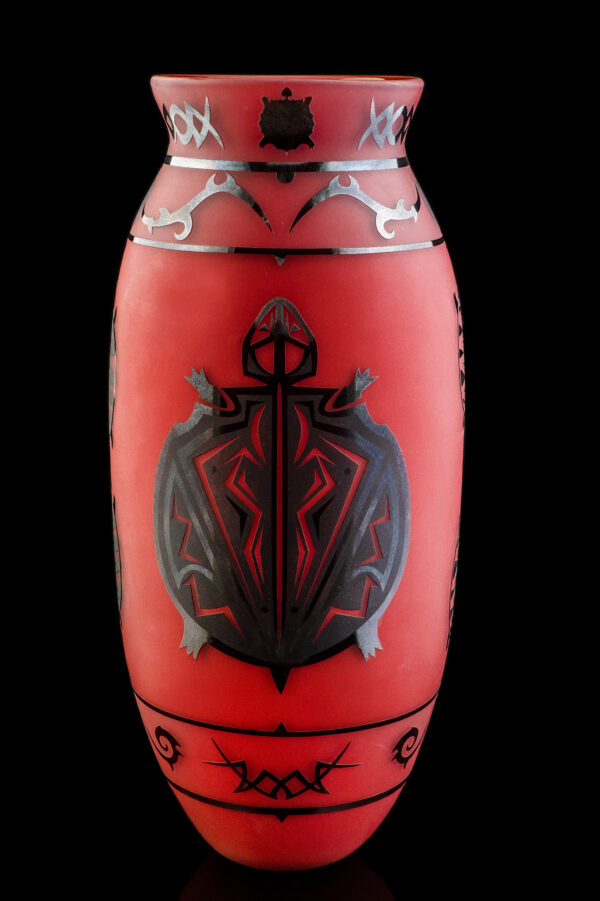
Robert “Spooner” Marcus (Ohkay Owingeh Pueblo), Red Turtles, about 2011. Blown and sand-carved glass, 21 3/4 x 9 inches. Museum of Indian Arts and Culture, Santa Fe, New Mexico. Photo by Kitty Leaken, Courtesy Museum of Indian Arts and Culture
Larry “Ulaaq” Ahvakana
Marcus Amerman
Angela Babby
Brian Barber
Dale Chihuly
Priscilla Cowie
Joe David
Alano Edzerza
Joe Feddersen
Dan Friday
Raya Friday
Gunybi Ganambarr
Tammy Garcia
Lew Gardiner
Tony Jojola
Joey Kirkpatrick
Ramson Lomatewama
Carol Lujan
Ira Lujan
Flora C. Mace
Robert “Spooner” Marcus
Djambawa Marawill
Patrick Morrissey
Jody Naranjo
Ed Archie NoiseCat
Marvin Oliver
Virgil Ortiz
Shaun Peterson
Lillian Pitt
Susan Point
Harlan Reano
Preston Singletary
Raven Skyriver
Rory Wakemup
Adrian Wall
Our Generous Sponsors
This exhibition has been organized by The Museum of Indian Arts and Culture, and Curator Letitia Chambers, and is toured by International Arts and Artists.
Presenting sponsor is the F. Price Cossman Memorial Trust, INTRUST Bank, Trustee.
Principal sponsors are Fred and Sue Berry. Distinguished sponsors are Foulston Siefkin LLP, Sonia Greteman and Chris Bruner, Anita Jones, Dr. Kimberly Krohn and Dr. John Fishpaw.
2023 exhibitions and public programs are generously supported by the Downing Foundation.
All museum exhibitions receive generous sponsorship from the Friends of the Wichita Art Museum and the City of Wichita.


